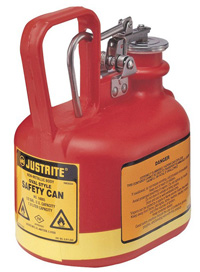| The Home page of ILPI's Safety Data Sheet (SDS) Resource, the leader in SDS information since 1995! | |
| The history and philosophy behind this resource. | |
| A curated collection of books and reference materials concerning Safety Data Sheets and closely related topics. | |
| Paste your plain text SDS into the SDS-Demystifier, and it will be converted into a hypertext-enriched document with links to detailed explanations of each key term. | |
| An extensive list of frequently asked questions about Safety Data Sheets including regulations, content, compliance, and more. | |
| A humorous take on Safety Data Sheet jargon. Fill in the blanks on our entry form to generate a personalized Unsafety Data Sheet to share with your coworkers. | |
| Since 1995, we've maintained this massive curated list of the best places to find Safety Data Sheets on the Internet. | |
| You are here! Way more than a glossary, this hypertext-enhanced resource covers hundreds of SDS-related terms and expert knowledge. Each entry includes both the SDS relevance and links to additional authoritative resources. | |
| Archived results of Safety Data Sheet related polls taken by some of our millions of site visitors | |
| The OSHA regulations behind SDS regulations, including the inspection guidelines and over 400 official interpretations letters under the Hazard Communication Standard | |
| Commercial suppliers of SDS authoring and management software as well as cloud compliance services. | |
| Commercial companies that will create SDS's for your specific needs as well as SDS translation companies. |

Safety signs, banners, and scoreboards? Get yours at Safety Emporium!
Definition
An aliphatic compound is a hydrocarbon (a molecule containing only carbon and hydrogen atoms) that is not aromatic; e.g. it lacks a particular arrangement of atoms in its molecular structure that would make it aromatic.
Additional Info
Aliphatic is especially used in reference to open-chain (non-cyclic) hydrocarbons. The term can also apply to open-chain hydrocarbon sub-units of larger organic molecules, for example "aliphatic group" or "aliphatic substituent".
The adjective can also be extended to other functional groups, for example "aliphatic amines" are amines in which only aliphatic groups are attached to the nitrogen atom of the amine. For example, trimethyl amine, N(CH3)3, which has three aliphatic CH3 substituents attached to the nitrogen atom, is an aliphatic amine, however N-N-dimethylaniline, N(CH3)2(C6H5), which has two CH3 groups and one phenyl group attached to the nitrogen atom, is not because the phenyl group, C6H5, is an aromatic substituent. Aliphatic alcohols and aliphatic ethers are additional common examples.
Some references define aliphatic with the term "linear hydrocarbon chains", but the term actually includes branched chains as well. Likewise, some definitions of aliphatic permit these chains to contain elements besides hydrogen and carbon. See our hydrocarbon entry more information about the various types of hydrocarbons and their nomenclature.
Aliphatic hydrocarbons are major components of everyday materials such as turpentine, gasoline and oil-based paints.

Store and dispense flammable liquids safely with flammable liquid safety cans from Safety Emporium.
SDS Relevance
Aliphatic hydrocarbons and their chemical derivatives are often quite flammable. While some pose no serious health risk, others, such as n-hexane are known neurotoxins. Most aliphatics can lead to defatting (drying) of the skin, which can possibly lead to dermatitis (eczema).
Always wear proper gloves and eye protection when working with aliphatic materials. Be sure to wear an appropriate respirator if ventilation is not adequate, and be careful to avoid ignition sources as the vapors can easily reach their flammable limit.
Further Reading
- IUPAC (International Union of Pure and Applied Chemistry) nomenclature rules for how to systematically name organic molecules.
- Read this Centers for Disease Control (CDC) document n-Hexane-Related Peripheral Neuropathy Among Automotive Technicians --- California, 1999-2000.
- Examples of aliphatic compounds / non-aromatic at Wikipedia.
- Aliphatic Hydrocarbons at Chemistry LibreTexts™.
See also: hydrocarbon, aromatic, organic.